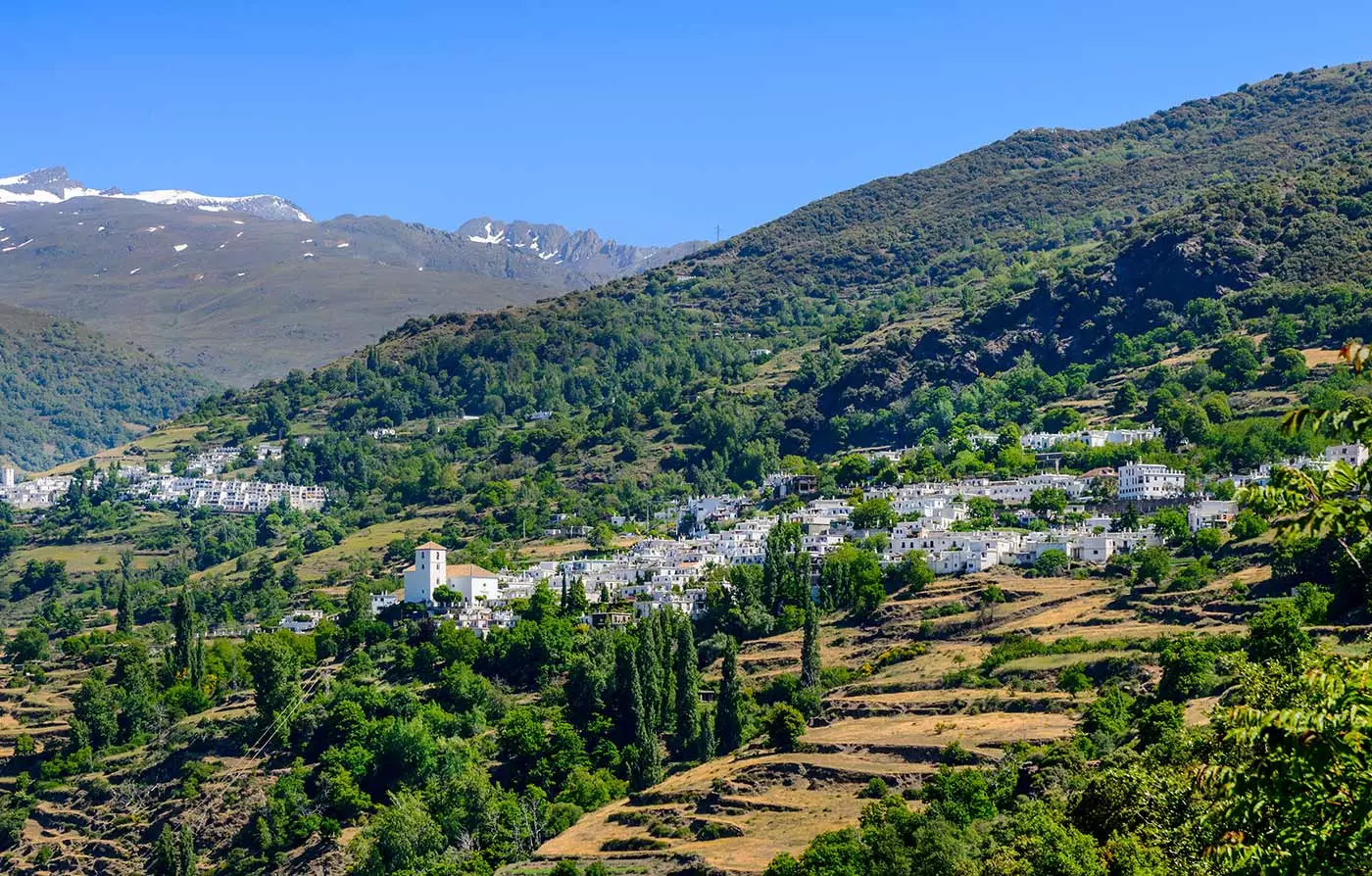
Bubion
1. VISIT THE BUDDHIST CENTER OR SEL LING
If La Alpujarra gives off a special energy, in the mountains of Soportujar it multiplies. The reason is the Buddhist center O sel ling , a Tibetan paradise at 1,600 meters above sea level on the south face of the Sierra Nevada. Getting there is not easy. You have to travel a six kilometer path that climbs up the slope between stones, potholes and vertigo views. If you do it on foot, your car and the environment will thank you; And, by the way, you exercise. The center was born in 1980 by Lama Yeshe and Lama Zopa Rinpoche, both Tibetans. A couple of years later the place received a visit from the Dalai Lama himself, who named it O Sel Ling, which means clear light place . In this space you breathe a special sensation, like the one emanating from the prayer wheel that welcomes you. From there, a small path takes you through the facilities of the center , which include various Buddha statues, a tomb, a small stupa, a visitor center or a beautiful statue of Tara, the mother of wisdom.
The purpose of this place is to favor the intensive practice of meditation and spread the teachings of the Buddha, such as the one that says that the moment you let go of clinging to desire you find fulfillment . If you dare, you can make an approach to Buddhism or yourself, for which retreats (individual or group) can be held in traditional and austere cabins. In addition, they offer different courses and talks, such as the one that will osel hita (that boy from Granada who at the age of two was considered the reincarnation of Lama Yeshé) at the end of next March. The visit is free and in winter it can be visited between 3:30 p.m. and 6:00 p.m. Although it is recommended to call the contact numbers beforehand: 958 34 31 34 or 669 863 676.

O sel ling
two. ROAD TRIP IN THE FOOTSTEPS OF ULISES AND BOABDIL
Legend has it that Ulysses built a city whose wall was reinforced by the figureheads of his ships and the shields of his soldiers. The ancient Greeks placed it in what is now Ugíjar , a beautiful town in the heart of La Alpujarra Granada. Whether legend or certainty, what is certain is that this municipality has had its share of prominence throughout history : there the Romans looked for (and found) gold in its mountains and it was in this municipality where Boabdil He lived after the capture of Granada by the Catholic Monarchs. Since then, he has been known as Lord of the Alpujarras and, at that time, Ugíjar received the title of city.
Today the municipality has just over 2,500 inhabitants and, yes, it can be a good base camp to discover the deepest area of the Alpujarra region. One step away are towns such as Valor, Mecina Bombarón, Lucainena, Cherín, Cojáyar, Jorairátar or Murtas , where life definitely takes place at a different pace. Narrow roads, spectacular landscapes that change color with each season and numerous places of interest to learn about local history are stops along the way for a road trip that asks to drive slowly. One of those corners to the south of Granada is Yegen , where the hispanist Gerald Brenan lived in different periods in the first third of the last century and where he had a daughter with a girl from the town. History, tradition, legends and truths that intermingle to spice up a trip that Pedro Antonio de Alarcón already made in the 19th century and that he immortalized in his book La Alpujarra: sixty leagues on horseback preceded by six in diligence.
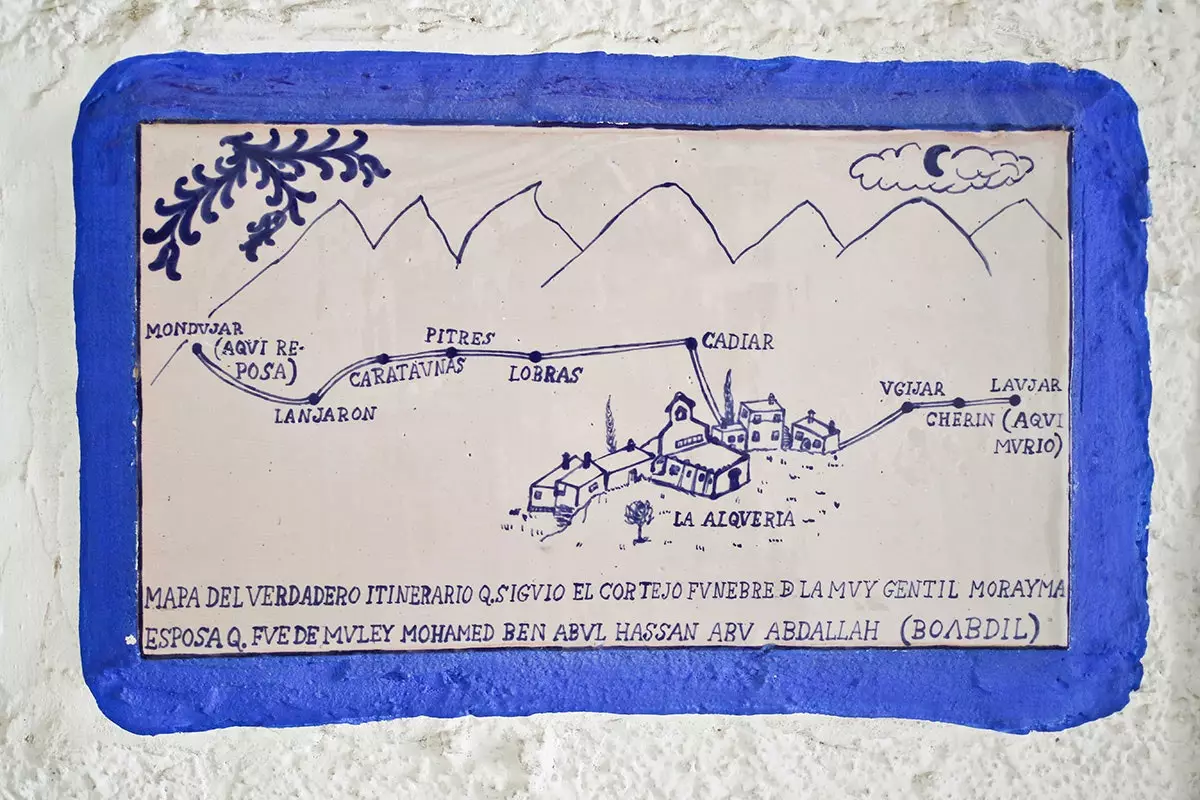
Road trip in the Alpujarra
3. SAVING THE ALPUJARREÑO DISH OF CASA JULIO
Poor-style potatoes, fried egg, fried pepper, sausage, black pudding, pork loin and several slices of Serrano ham from Trevélez . All of this is brought together in the traditional Alpujarra dish , the authentic gastronomic star of this region of Granada. There are hardly any restaurants in the area that don't serve it and few are the visitors who do not ask for it . One of the best choices to taste it, by far, is Casa Julio. It is a family restaurant in Pampaneira where they grow many of the vegetables they serve on their plates and where cured meats, sausages and meats are home-made: if you don't believe it, all you have to do is try the black pudding or the orza loin, authentic gastronomic barbarities. The smell coming from the kitchen is the same as when you enter your grandmother's house at noon and hunger is activated even if you don't want to. The cook, Pura, offers an interesting and varied menu, where she highlights her stew, which she prepares differently every day: cabbage, chickpeas, fennel... You can order it for six euros and she will make you fall in love like the rest of the spoon dishes , whether it's a gitanilla of beans, a noodle casserole or some figuelos (a variety of green beans) . There is also chicken, rabbit or choto meat seasoned with an incredible Almond Sauce based on natural tomato, fried bread, dry roasted red peppers, onion, garlic, local wine, olive oil and, of course, toasted almonds.
The Alpujarra migas (of bread or semolina) are also a great specialty of the house, without forgetting the very tasty fruit salad. Tasting a menu serves there to understand its slogan: July House , cook with love. The local wine, whether red or sweet, pairs perfectly with all this gastronomic selection; even with dessert, where you can choose from an excellent cheesecake with walnuts to a typical Alpujarra soplillo made with meringue, almonds and lemon. If your stomach asks for rest, in this family they even have a small hotel to rest with a nice name: Estrella de las Nieves.
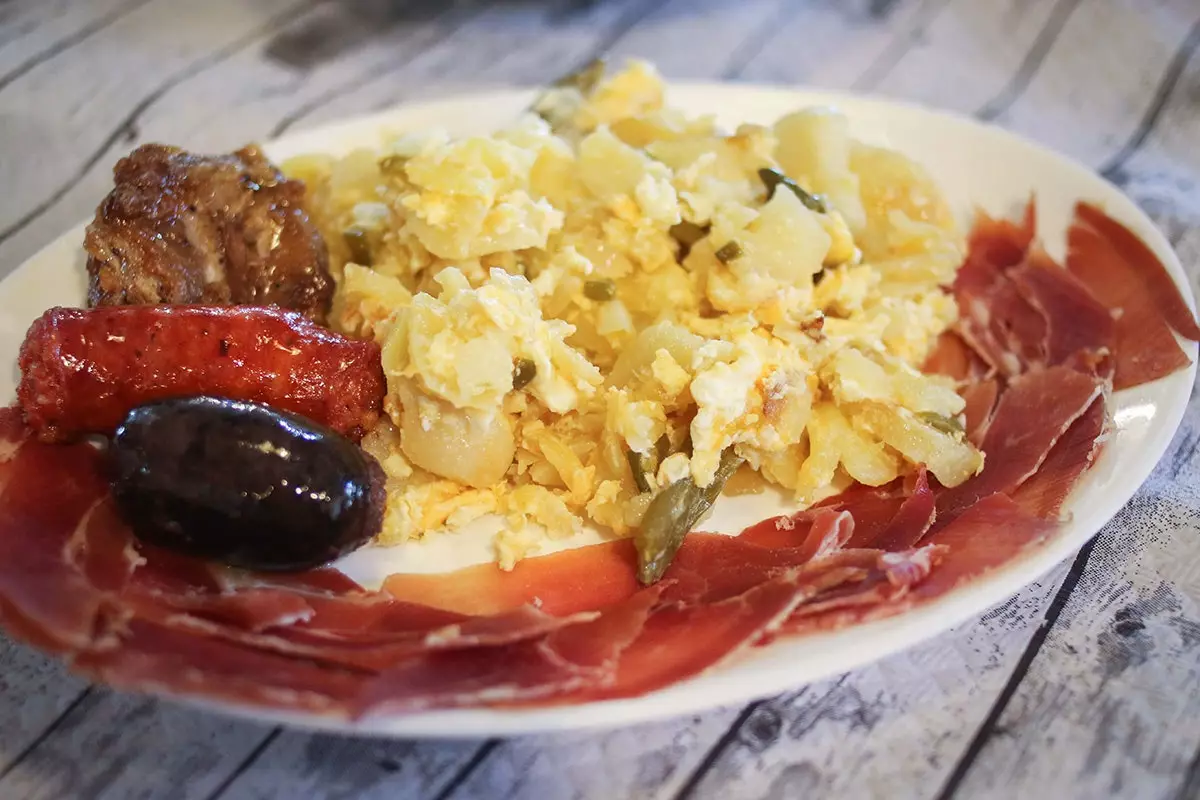
Alpujarra gastronomy at Casa Julio
Four. DISCOVER UNIQUE PLACES THROUGH HIKING
The Cebadilla It is an old town created in the 50s of the last century to give shelter to the workers of the Poqueira Power Plant. It came to have 200 inhabitants and even a large hermitage. Today it is uninhabited , but the buildings are still standing, giving a ghostly appearance to a unique place where, it is said, haunts the spirit of a Moorish princess : such is the beauty of the landscape that captures the heart of those who pass by (and she passed by) . You too, if you want, can get there through a beautiful hiking route in Just over an hour , which can be converted to circular for enjoy incredible ravines and the beautiful Abuchite bridge . There, surrounded by poplars and beautiful pools, you can take a break or, if the weather allows it, a swim.
This path is just one of the many that exist to explore La Alpujarra on foot. In this region, all the most emblematic towns, villages, rivers, summits or places are linked by paths of care and martyrdom, which I would say Ibn Alkhathib . And, best of all, there are options for all levels. La Cebadilla is a good place to start, as are the many trails that link the seven towns in the municipality of La Taha . They are suitable for the whole family and along the way you can discover springs with water rich in iron, century-old chestnut trees or small towns such as Ferreirola (with just under a hundred residents), Mecinilla (where 20 people live) or Aylacar , already depopulated.
Other paths require preparation, such as one of the most attractive routes in the area and that takes you to the highest peak of the Iberian Peninsula: The Mulhacen . you can do it from Capileira either Trevelez , in both cases with routes that can last 12 hours or more, which invite you to spend the night halfway (camping in Siete Lagunas or resting in the Poqueira Refuge, for example) and which involve a more than important effort. And if you come up, you can dare to walk the entire Sulayr trail, which allows you to walk the entire Sierra Nevada Natural Park in 19 amazing sections and a total of 300 kilometers. You choose.
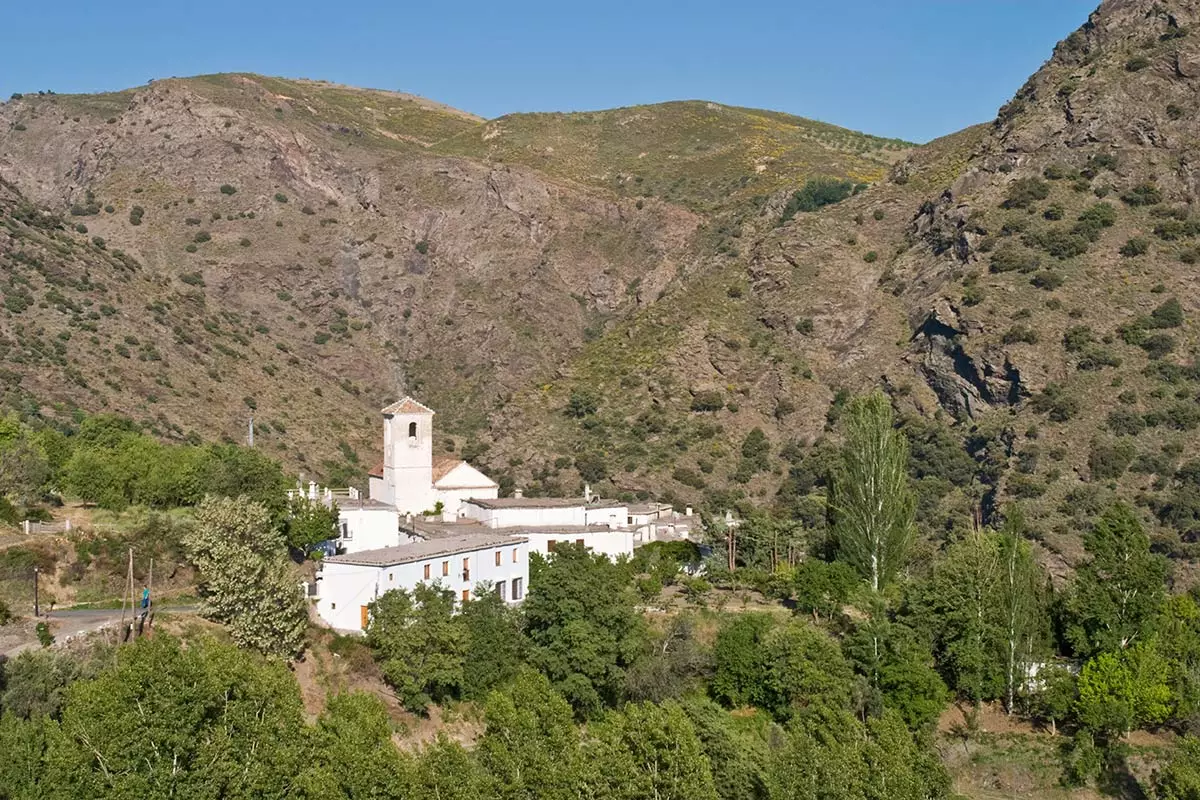
Ferreirola
5. GET LOST IN THE STREETS OF PAMPANEIRA AND CAPILEIRA
Pampaneira, Bubión and Capileira are three of the most visited towns in the Alpujarra of Granada . A trio of municipalities staggered and settled in the Barranco del Poqueira in an environment that amazes for its immensity and purity. Capileira and Pampaneira are among the most beautiful towns in Spain and a walk through them justifies their selection. The first is usually the starting point for those who want to explore the Sierra Nevada on foot. Its narrow streets, with various viewpoints to the Barranco del Poqueira , make this town an architectural marvel, where the tinaos (small arcades) and the terraos (typical Alpujarran flat roofs) stand out, in addition to the traditional public laundries and the usual use of stone for almost any construction (why buy bricks when here there are stones everywhere). Its good conservation means that its urban area has been declared Historic-Artistic Complex and Picturesque Place , while the Council of Europe usually puts the population as a model of popular architecture.
the second town, pampaneira , is also full of slopes that ascend from the surroundings of the church of Santa Cruz, in the middle of Plaza de la Libertad, to the upper neighborhood and the road to bubion (which you can't miss either). Alleys that merge with each other, which usually have a ditch in the center to allow the descent of the thaw waters and that take you to small corners that make this town a must-see. In addition, you will enjoy places like the La Moralea winery, where they have an infinite variety of artisanal and local products, not only from Granada, but from Andalusia and a good part of Spain. And don't forget to drink water from the San Antonio fountain, where legend says that single people who drink it with the intention of getting married... It's not wrong! Well, he instantly has a girlfriend. You see it! Perhaps this is how you will accept the invitation that Pampaneira makes you as soon as you arrive: Traveler, stay with us .
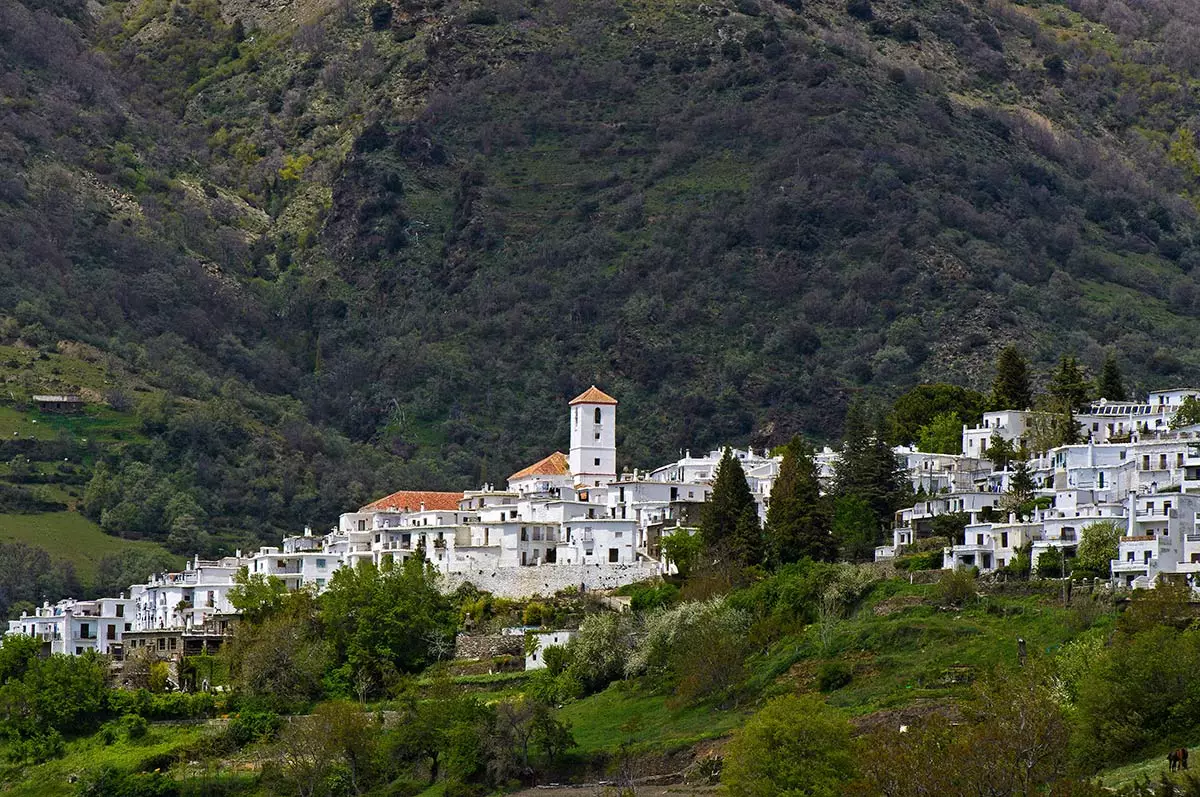
Capileira
6. LIVING IN A TRADITIONAL HOUSE
nothing better than living The Alpujarras as do their neighbors. An experience that allows us to eliminate clichés and stereotypes, understand that life can be different and understand the special symbiosis that the inhabitants of this place have with the nature that surrounds them. Also a way to understand why local traditional architecture it is one of the first examples of bioclimatic constructions due to its orientation, distribution or materials used. Pages like Airbnb, Escapada Rural or Turismo Alpujarra offer different options ranging from little houses in the upper part of Pampaneira (where you will lose legs from so much climbing hills), to beautiful apartments in villages like Atalbéitar , passing through isolated houses in the countryside and next to the numerous rivers that descend the slopes.
It is a perfect way to discover the terrible night silence that surrounds the mountains, the way the wind hits the Sierra Nevada (and how the echo resounds in the ravines), the taste of cooking with local products, how good a coffee tastes warm first thing in the morning with some freshly baked toast from your neighbor's oven or the feeling of freedom of not having mobile coverage. Spending several days in a house in La Alpujarra helps to understand the rhythms of mountain life, be moved by deep folk wisdom sense that wealth is not what this society sells us and learn that what is important has little to do with our daily concerns in the city.
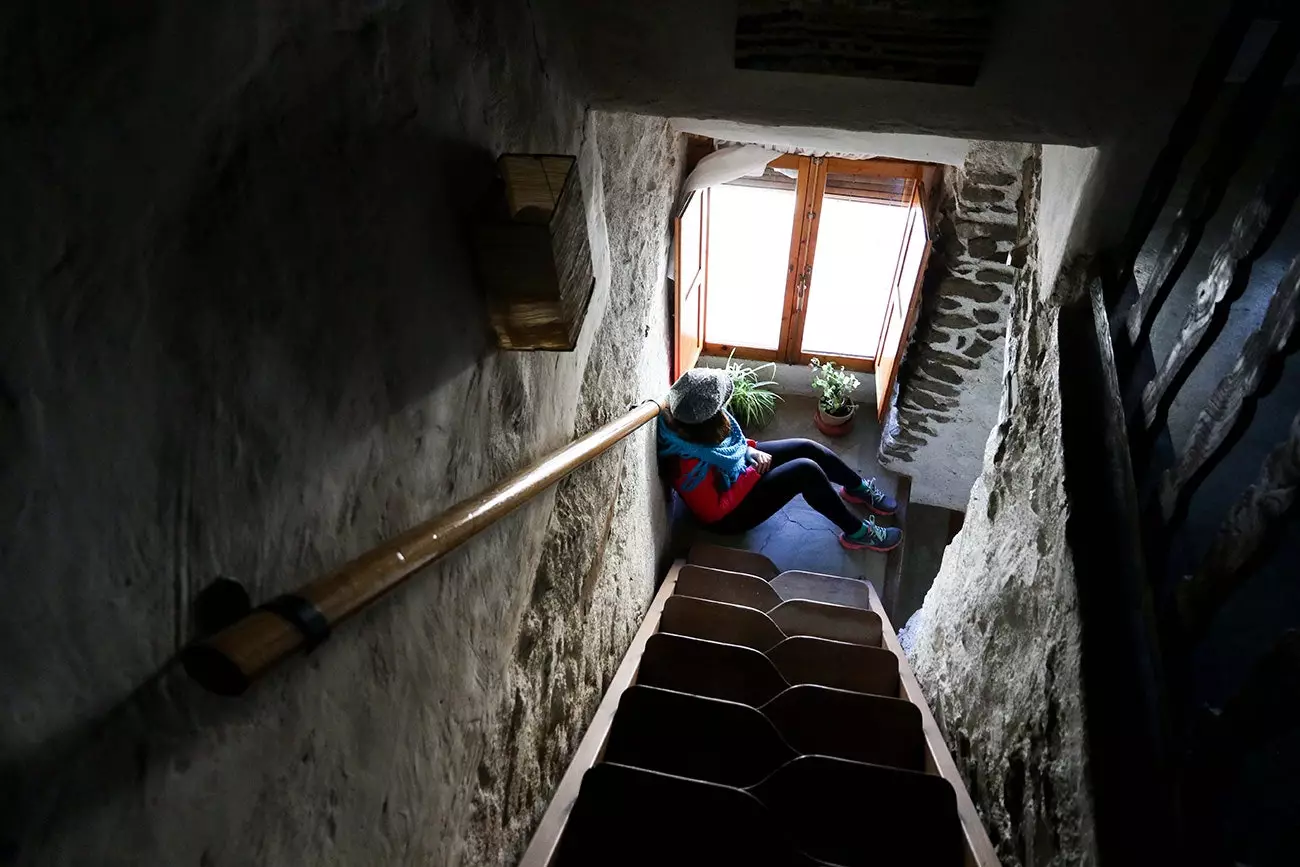
Traditional house in La Alpujarra
7. DISCOVER THE GASTRONOMY OF L’ATELIER
Imagining a trip to La Alpujarra, probably no one thinks of tasting a miso soup, a plate of Vietnamese quorn or coconut curry with vegetables and tofu. However, they are some of the proposals of L'Atelier , a gastronomic exception located in a town as beautiful and tiny as Mecina, with just over 100 inhabitants. Its managers are Briggite and Michelle , who arrived four years ago from the French Basque Country to take charge of this restaurant opened in 1992 by some of their compatriots. They work with organic, local, fair trade and evident quality products, with which they prepare succulent Arabic-inspired vegetarian dishes.
An Andalusian gratin, based on red lentils, vegetables, tomato sauce and cheese is a good example, but also samosas with homemade chutney or Moroccan cigars (don't think wrong, they are stuffed and fried pasta rolls ) . For drinks, they have local wine from Mecina that deserves to be tried, although their specialty is undoubtedly the delicious sangria; and, for dessert, you can have a very healthy fruit kefir, some homemade orange custard or a delicious kombucha . Reservations are recommended, although in winter you will most likely have the entire restaurant at your disposal. It is the best opportunity for Briggite from the kitchen and Michel as an assistant to help you enjoy a unique night. On the upper floor they have two rooms in case the night goes on and you prefer to sleep there: it will be a great choice.
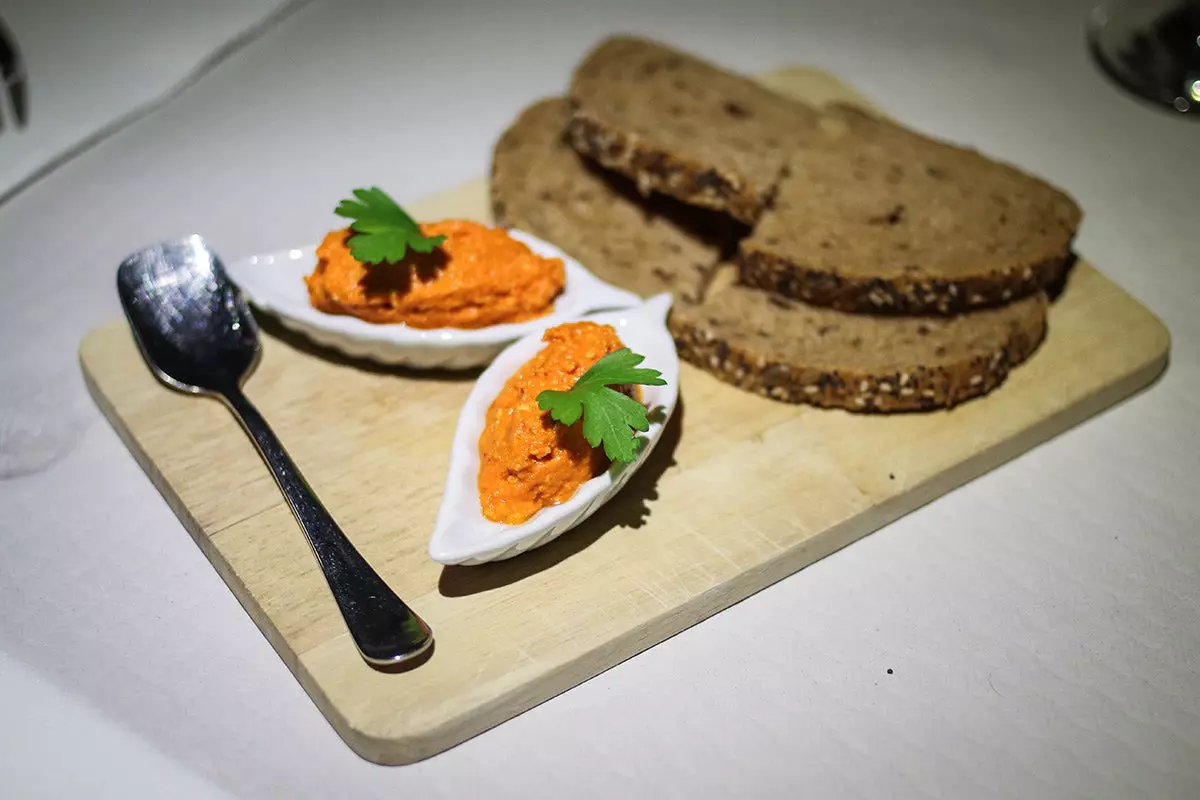
L'Atelier
8. TASTE THE WINES OF THE BARRANCO OSCURO WINERY
Torvizcón, Cástaras, Nieles, Lobras or Tímar are some of the towns of La Alpujarra Granada located south of the Trevelez River . The area is also known as The Contraverse and some of the tallest vines in all of Europe grow there. With them, wines and musts have traditionally been made for home use, although little by little their quality led to the creation of various wineries that gave more value to these wines. For this reason, lovers of oenology have in this area a unique opportunity to try some of the most personality wines from all over the country . Some of them are the work of the BarrancoDark winery, in Cádiar, where Manuel Valenzuela and his son Lorenzo put the magic to create natural wines with a unique flavor. Just uncork one of the 3,300 bottles of Burgundy Garnet to justify a visit to this region where curves are the protagonists of roads that never stop ascending and descending slopes. With a unique affection and in a landscape marked by the Veleta peak to the north and the Mediterranean to the south, the twenty wines produced by this family are a gift for the palate.
In the same municipality is located The Farmhouse of Morayma , whose name honors the last queen of Granada and wife of Boabdil. There is a farm of fifty hectares of ecological agriculture, where in addition to vineyards there is also almond, fig, quince and olive trees are born . They also put at your disposal some beautiful rural apartments that will help you to disconnect from the world and, while you're at it, try the homemade delicacies of their small restaurant or stroll through almost forgotten places. Obviously, you cannot leave without tasting their organic red and white wines. Cuatro Vientos, Los Barrancos, García de Verdevique, Buenavista Domain or Néstares Rincón are other wineries that are in the area and that will help you get to know the local viticulture better. Watch out for the curves...
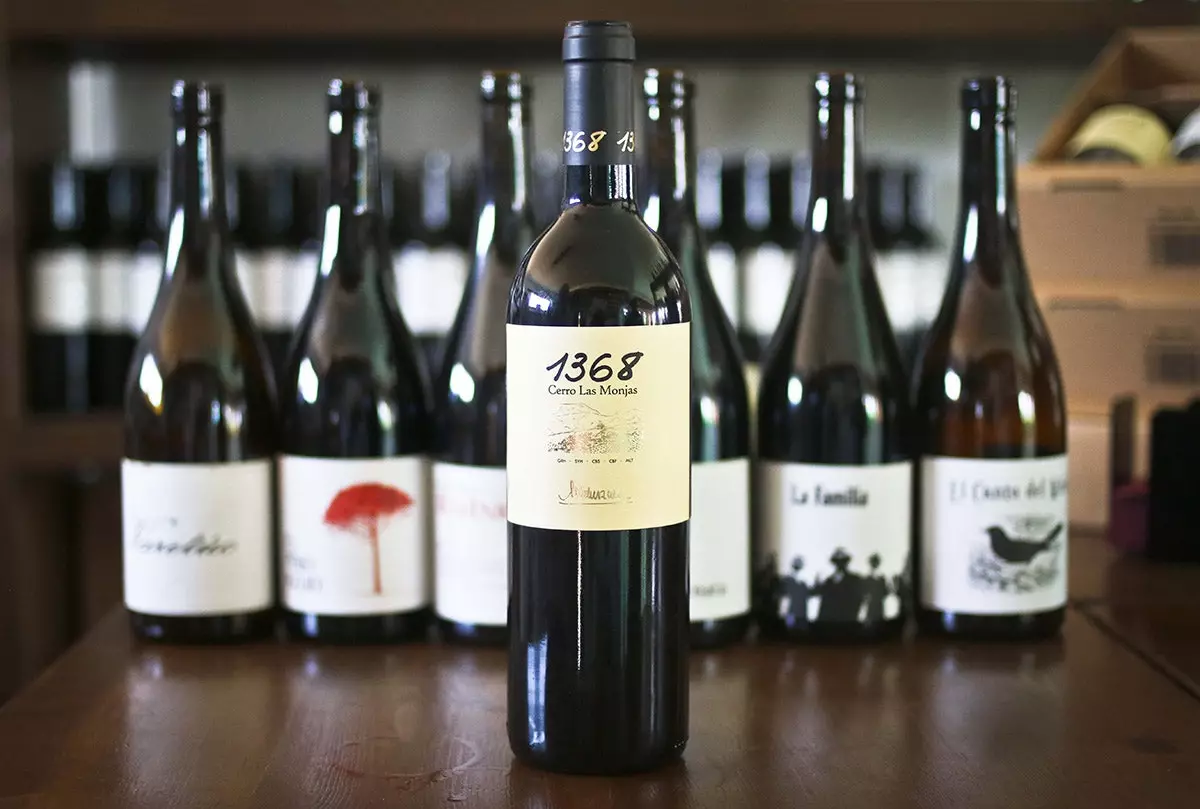
Dark Ravine
9. KNOW THE LOCAL HANDICRAFTS
It is difficult to travel to La Alpujarra and not return home with a jarapa in your luggage. Their presence is constant in numerous shops, which distribute their elaborate and colorful fabrics through the streets to attract the attention of the traveller. They come in all shapes, sizes, and colors. its price is very affordable and they are an entire artisan tradition that originated with the expulsion of the Moors. They used the looms to weave silk, but the neighbors gave them a more domestic function and, with the used clothes, they created the first jarapas that insulated them from the cold. A recycling that over time has become one of the most typical images of the area, giving color to the intense and clean white color of the Alpujarra facades. In fact, there are still some looms where you can see how the production work is. One of the most interesting is Hilacar, located in Bubión and where Ana Martínez has been keeping this tradition alive for three decades. There are also looms in other municipalities such as Pampaneira, Capileira and Ugijar . But also, The Alpujarras It is also known for other craft trades that work ceramics, iron, wood, leather, esparto or inlay , with workshops and offices that, for the most part, can be visited to discover some of the secrets of those who still create with their hands.
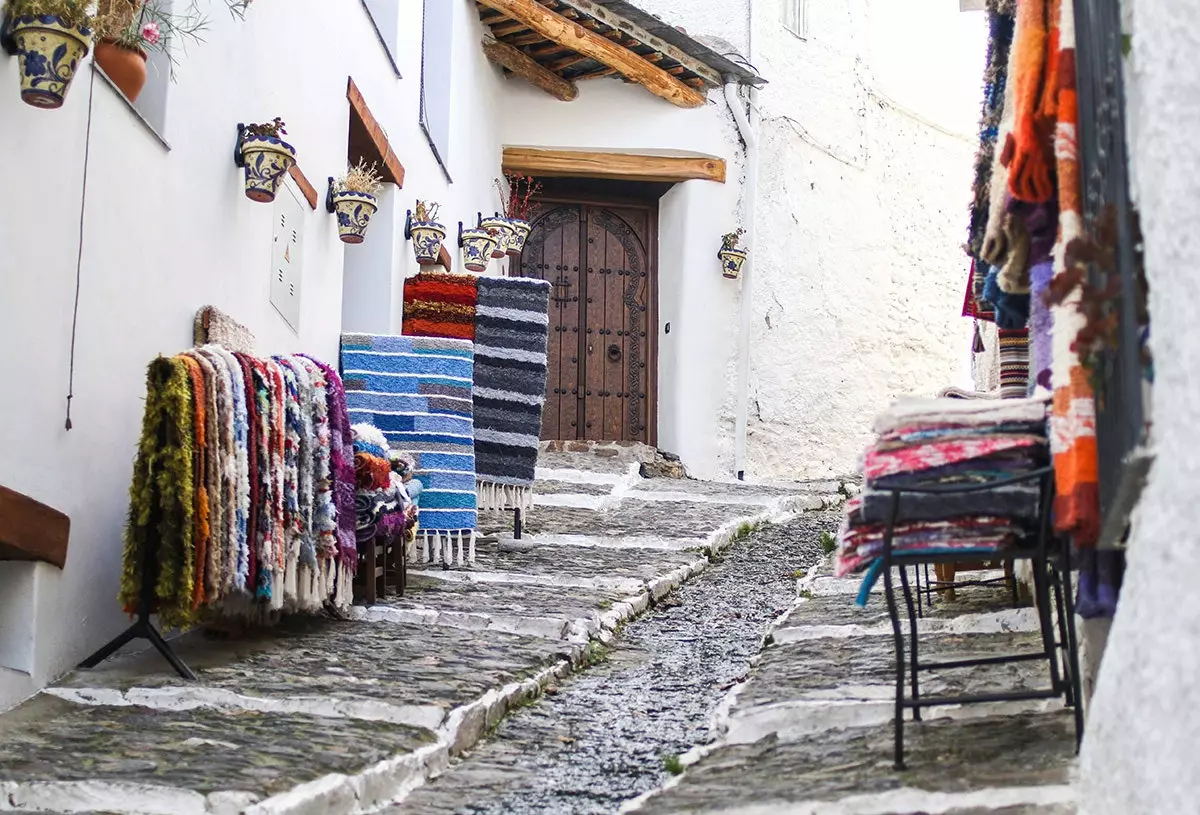
Crafts in Hilacar
10. YOU PUT THE LAST ONE
On any trip to The Alpujarras Whether it's a day or a month, it's important to let yourself go. In the most unexpected corner you can find an interesting person to talk to, a bar with a tapa of freshly cured sausage or a cellar where you can fall in love with the most interesting local products. The region is an area of travelers full of stories, neighbors who teach you to share or shepherds who treasure wisdom . Also of natural spaces where silence is the protagonist, which allows you to run into herds of mountain goats, stealthy foxes or a clever and colorful variety of birds. The Alpujarra is traveled without haste , with patience and flexibility to change the plan every day: the best is always yet to come. On trips you always have to leave room for improvisation and, in this region of Granada, even more so. But keep one thing in mind: whatever you do, you will always have Alpujarra to discover . So this last experience is put by you. Have a good trip! And you will tell us.
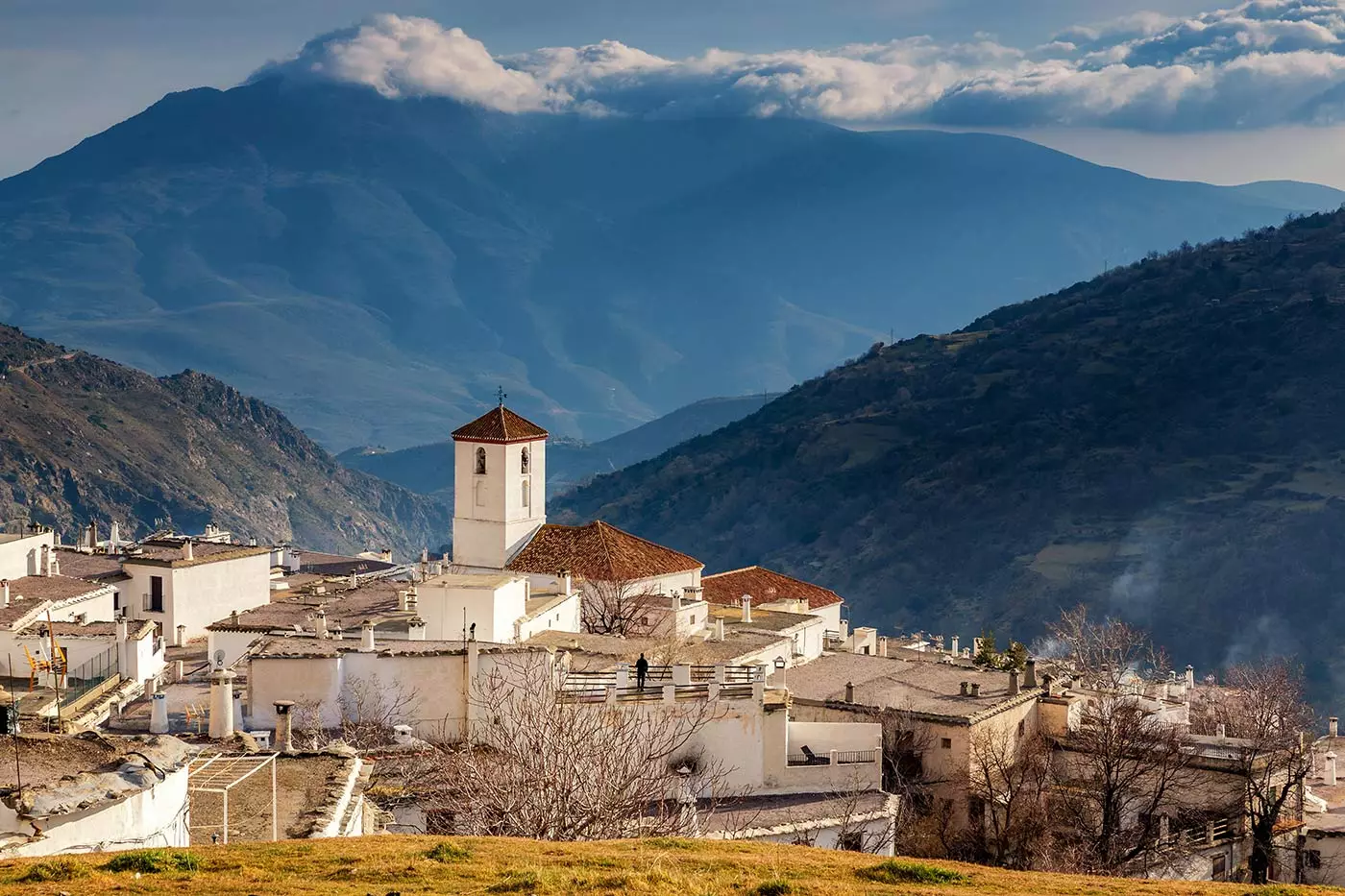
Capileira
